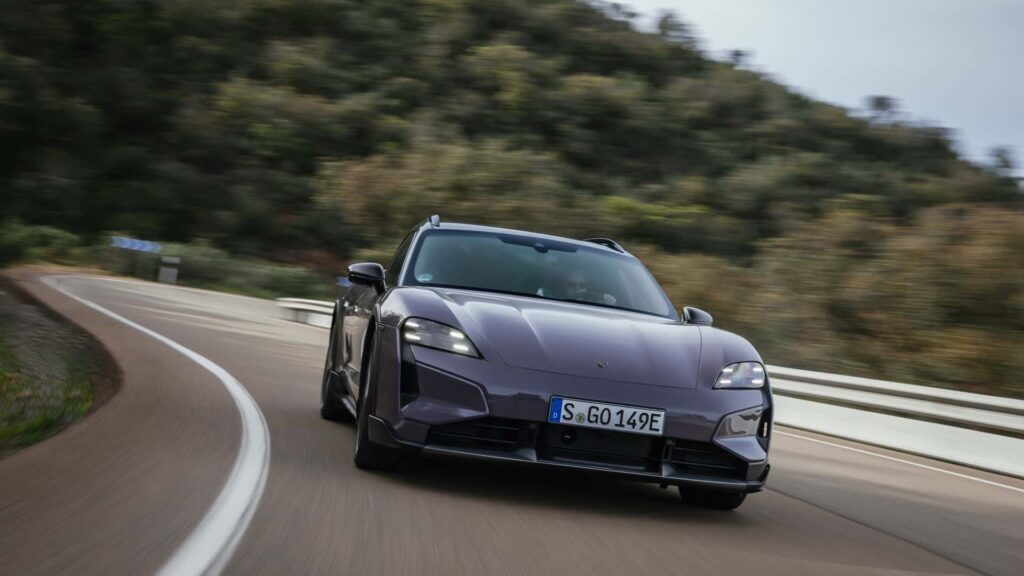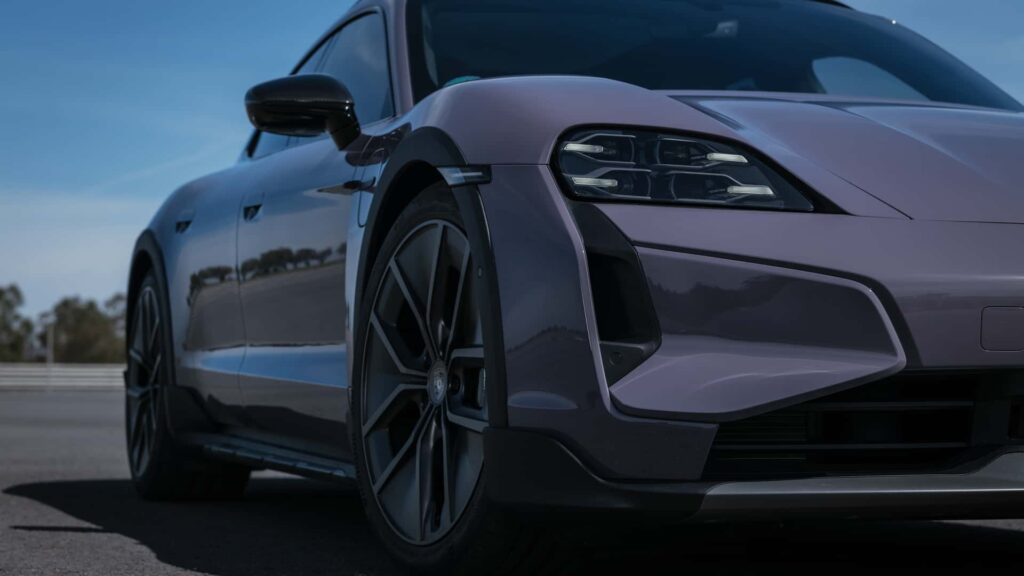This website uses cookies so that we can provide you with the best user experience possible. Cookie information is stored in your browser and performs functions such as recognising you when you return to our website and helping our team to understand which sections of the website you find most interesting and useful.

2025 Porsche Taycan First Drive: Elevating Excellence in Electric Vehicles

2025 Porsche Taycan: Advancing the Electric Driving Experience
Porsche engineers epitomize pride in their craft. Renowned for crafting some of the finest automobiles globally, they rise to any challenge with unwavering determination. When Tesla and Lucid set their sights on the Taycan’s performance crown, Porsche responded with vigor. The outcome? A monumental leap forward from the original model.
Internally dubbed the J1 II, the updated electric sedan promises substantial enhancements in range and boasts the fastest charging speeds among EVs currently on the market. While EPA figures for the new Taycan are forthcoming, Porsche asserts a remarkable 35 percent improvement in WLTP range. This feat is made possible by advancements in cell chemistry, resulting in increased energy density for both the standard and larger “Performance Battery Plus” variants—now offering 83.6 kWh net for the base pack and 93.6 kWh for the larger one—while concurrently shedding weight through various tweaks. Moreover, charging speed receives a significant boost, with the Taycan now capable of reaching up to 320 kW at compatible stations.
The Taycan receives a power boost to complement its expanded batteries. The base rear-drive Taycan now delivers 429 horsepower (with the larger battery), while the Turbo GT churns out over 1000 horses. Furthermore, numerous chassis refinements are aimed at enhancing driving dynamics beyond mere straight-line speed.
The culmination of these changes is evident: the Taycan was already hailed as one of the finest-driving EVs. Now, it emerges even more refined and capable than before.
Exploring the High-Performance Dynamics of the 2025 Porsche Taycan Turbo S
Given that InsideEVs Editor-in-Chief Patrick George has already conducted a range and charging test with the Taycan 4S, this provided an opportunity to explore how the updated Taycan performs with a focus on driving dynamics rather than efficiency. In essence, driving it like a true Porsche.
Porsche offered a full lineup of Taycan models for testing on a winding mountain route west of Seville. I found myself behind the wheel of a Turbo S sedan, although I also had the chance to experience a 4S Cross Turismo on the road. With a staggering 938 hp at your disposal when utilizing launch control, and a “mere” 764 hp in regular driving, the Turbo S appears to be an intimidating beast. And indeed, it’s outrageously quick, with Porsche claiming a 0-60 mph time of just 2.3 seconds.

However, exercising some restraint reveals that the Turbo S is remarkably manageable. The accelerator-pedal mapping allows for smooth acceleration at all times, unless, of course, you seek the full force of its power, which the Turbo S can unleash at a moment’s notice. Yet, the Taycan offers more than just straight-line speed. Its true strengths become evident as you push it closer to its limits, which, for the Turbo S, are exceptionally high. This perhaps makes a compelling case for opting for a lower-spec Taycan model over the Turbo S. While you may sacrifice some speed and features, you still gain access to the same refined driving dynamics.
Mastering the Art of Driving: Exploring the Dynamic Brilliance of the 2025 Porsche Taycan
Part of that is the excellent driving position. You sit low in a Taycan, lower than in most other EVs, and the view over the sloping hood is reminiscent of a 911s. The best word to describe the handling of the old Taycan was “sorted.” Where so many EVs feel their weight on a challenging road, the Taycan never did. They offered balance, stability, and feel in spades. The new one ups the ante.
All but one of the Taycans on hand had Porsche’s new Active Ride suspension, which uses hydraulic motor pump units to control the level of fluid within the dampers. Essentially, you can put force directly into the suspension, which non-active systems—no matter how advanced, —can’t do. Adaptive or magnetic dampers can adjust how firm the suspension is on the fly, but this system can actively push down on any corner of the car. Porsche uses it to totally eliminate body roll, pitch and dive while increasing the spread between comfort and sporty handling. It works. The system makes the Taycan feel hundreds of pounds lighter, yet on the worst roads—which aren’t easy to find in Spain—the suspension always works to maximize tire grip. Regardless of conditions, you can hustle the hell out of the Taycan.
There’s even an active-ride mode that overcompensates for body motions, rolling into corners like a motorcycle and diving and pitching like a helicopter under acceleration and braking. I find it unsettling. The car moves opposite how you expect it to. Thankfully, it’s user-selectable, and not available in Sport and Sport + driving modes. Active Ride is a $7,150 option, however, and I imagine that’ll be a tough pill to swallow for many. Unfortunately, I didn’t get a chance to try the base suspension setup, but the last Taycan rode and handled great without Active Ride.
In any case, this is a driver’s car. The controls, steering, brakes and accelerator, are all calibrated to perfection. It’s the sort of car that makes you a smoother driver. And while tire noise is high (as is expected with such wide rubber), a Taycan makes for an excellent daily driver. I’m not a fan of the lower-center-console screen for climate controls, but the main infotainment system is straightforward and responsive, and the digital gauge cluster is quite elegant in its design.
The enhancements in range and charging capabilities further solidify the 2025 Porsche Taycan as an exceptional daily driver. During a spirited drive on the highway out of Seville and through the mountains, we achieved an average of 2.4 miles/kWh, a commendable figure. A more relaxed yet brief drive around town in the 4S Cross Turismo yielded an even better average of 2.9 kWh. While we anticipate further testing in less spirited conditions back home, initial indications are promising. Additionally, the charging performance lives up to its reputation, positioning the Taycan as best in class.
However, as is customary with most Porsches, the main drawback remains the price. The base price sees a $10,000 increase to $101,395, crossing the threshold of a Taycan under $100,000. The Turbo S variant we tested soared to $232,835. Disappointingly, certain features that one might expect to be standard are only available as options. For instance, a Taycan Turbo S lacks adaptive cruise control even at its $210,995 base price—a feature often included in more modest vehicles like the Honda Civic. Yet, excellence comes at a cost, and those seeking the pinnacle of Porsche performance must be prepared to pay for it.
This relentless pursuit of improvement epitomizes Porsche’s ethos. They’ve taken one of the best EVs and made it even better—an evolution that reflects the brand’s unwavering commitment to excellence. Similar to the enduring legacy of the 911, Porsche is now applying the same dedication to the Taycan. After all, why should Tesla and Lucid have all the fun?
